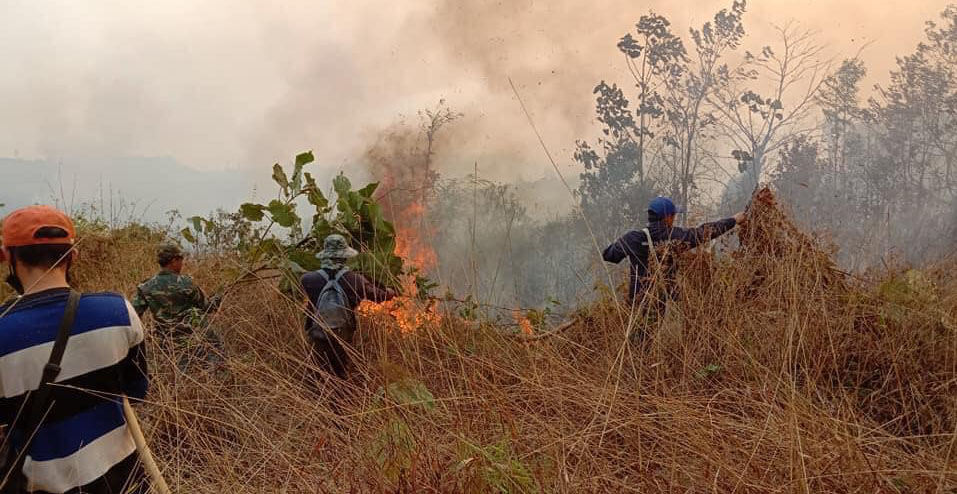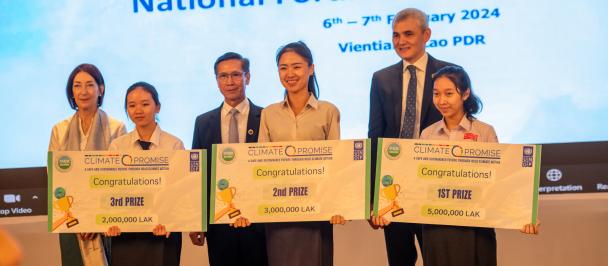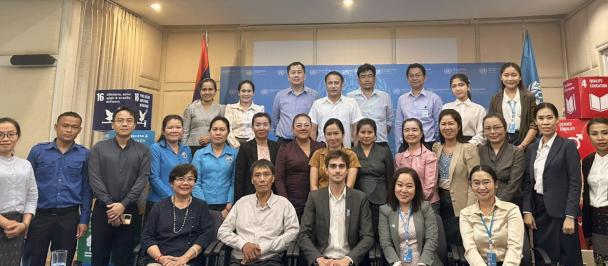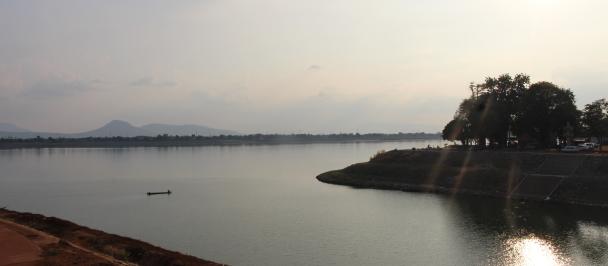Locals attempting to put out a forest fire in Borkeo Province in the evening of April 7th 2020. Photo: Lao Youth Radio FM 90.0 Mhz
The COVID-19 movement restrictions have had one good side-effect: the air is cleaner and clearer everywhere.
Everywhere? Well Not quite!
In South East Asia, especially in Northern Thailand and Laos, the air quality index has reached its annual peak of over 200 and Particulate Matter (PM) 2.5 was recorded on April 1. On the same day, AQI in Luang Prabang was 284.2 µg/m3, significantly higher than healthy levels which are below 101. People who breathe in bad air regularly are also said to be more susceptible to COVID-19, as their lungs are already compromised.
Dramatically lower levels of sea, land, and in the air transport has given China its greatest decline in carbon emissions in three years, and citizens can see clear blue skies once again. India where 21 cities are the most polluted in the world also saw its silver lining of the lockdown with 91 cities in the country recording air quality in the ''good'' and ''satisfactory'' range, according to India’s Central Pollution Control Board. The before and after pictures of New Delhi and the Taj Mahal are striking.
But at the same time, forests in South East Asia continue to burn and just like the virus, the resulting haze knows no boundaries. Chiang Mai, known for its beautiful ancient temples and stunning mountain landscapes, has been shrouded in hazardous haze, due to multiple forest fires. Its air was among the worst in the world, a few weeks ago.
As the winds from the Chiang Mai region waft over the mountains to Lao PDR, another tourism destination was shrouded in air that could be cut. Views across the Mekong river were not possible through the thick smog, as a forest fire burning close by shrouded the city. Several provinces in Laos reported forest fires including in National Protected Areas with some of them having started accidently and quickly spread in the dry brush, which has not seen rain for several months.
March and April are the months in which some farmers across Laos and neighboring provinces resort to slash and burn practices, handed down from their ancestors. While a ban is in place in Laos, for many farmers there is no better alternative to earn a meagre living. The return of many migrant Lao workers has contributed to more farm hands being available to harvest and sow, but also to more mouths to feed.
The same way as we humans require our lungs to breathe, the earth needs us to protects her lungs, the forests and the oceans. Across the world, people have shown that we can take decisive action by putting health before wealth. We need to show the same resolve when looking after our planet. The pre-COVID-19 ways of our economy were clearly not sustainable. Putting wealth before health created a polluted planet, though the Fridays for future movement of 2019 has shown us that there is a different way. “Building back better” needs to be replaced by “creating forward sustainably”, which focuses on making sure that we do not revert to the ways of the past, but use this precious moment of reflection that the COVID-19 pandemic has forced on us to reevaluate our actions and values.
Written by
Ricarda Rieger, Resident Representative, Lao PDR, United Nations Development Programme
The views expressed in this article are those of the author alone and not the United Nations Development Programme.

 Locations
Locations




